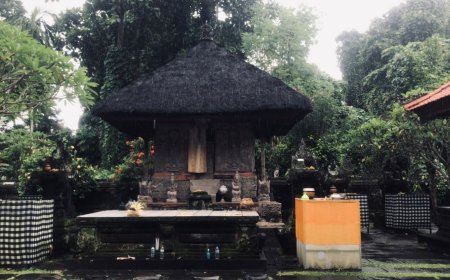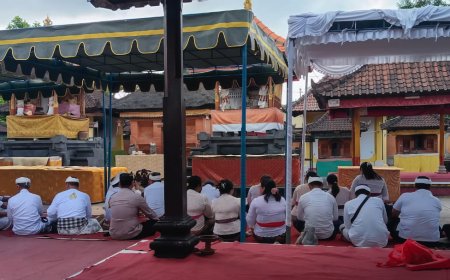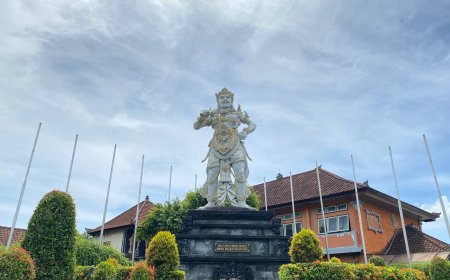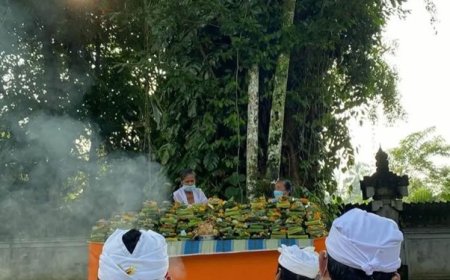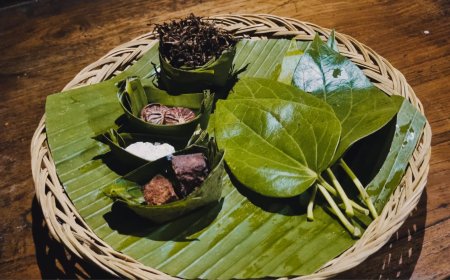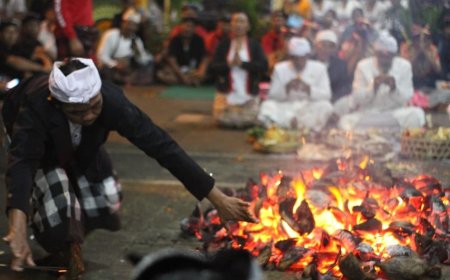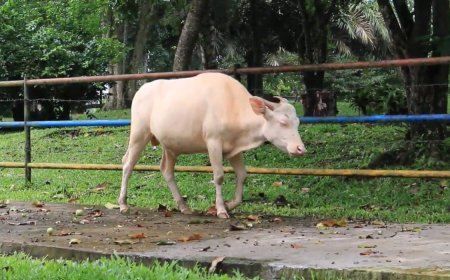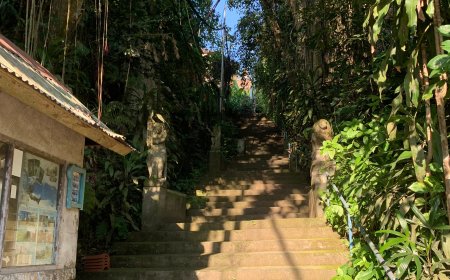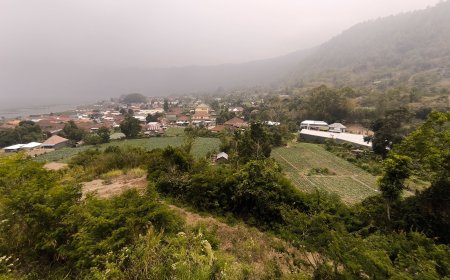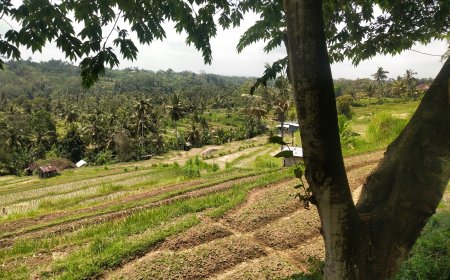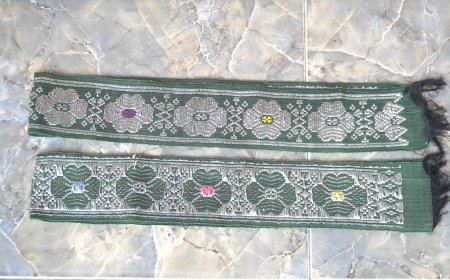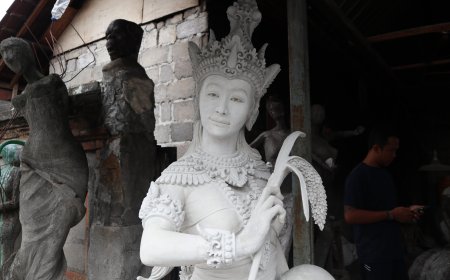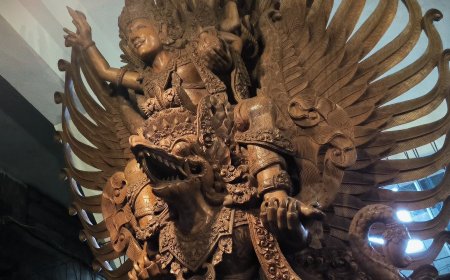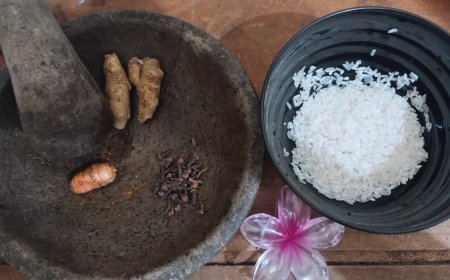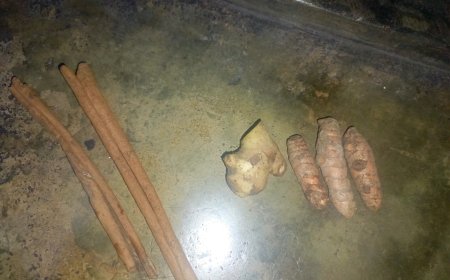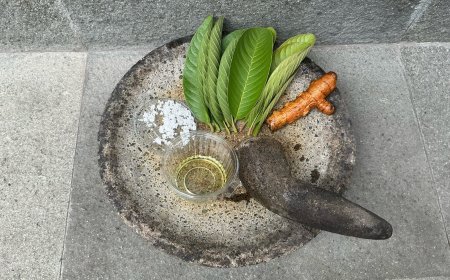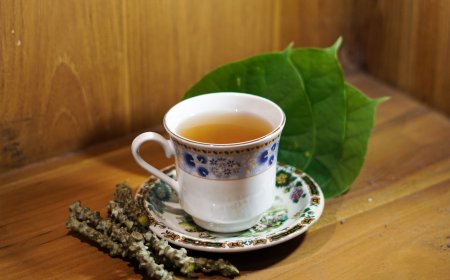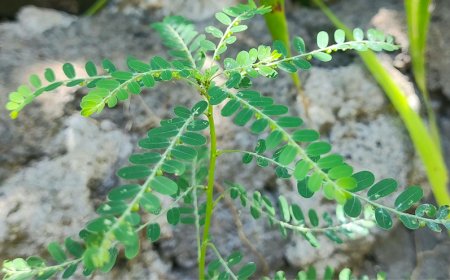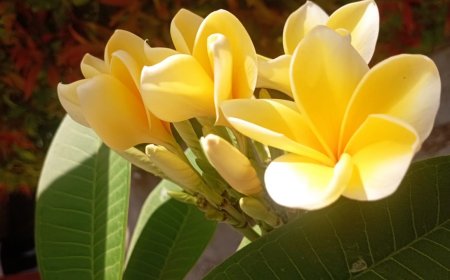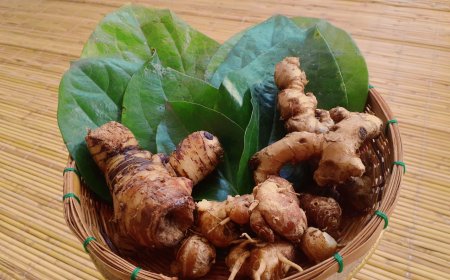Benefits of Papaya Leaf Loloh as a Fever Relief Medicine
Usadha Taru Pramana is one of the treatment methods in usadha practice that relies on plants as the basic ingredients in the preparation of medicinal herbs. The plants chosen in the context of Usadha Taru Pramana have characteristics that can be classified as tis (cold), anget (hot), or dumelada (medium).
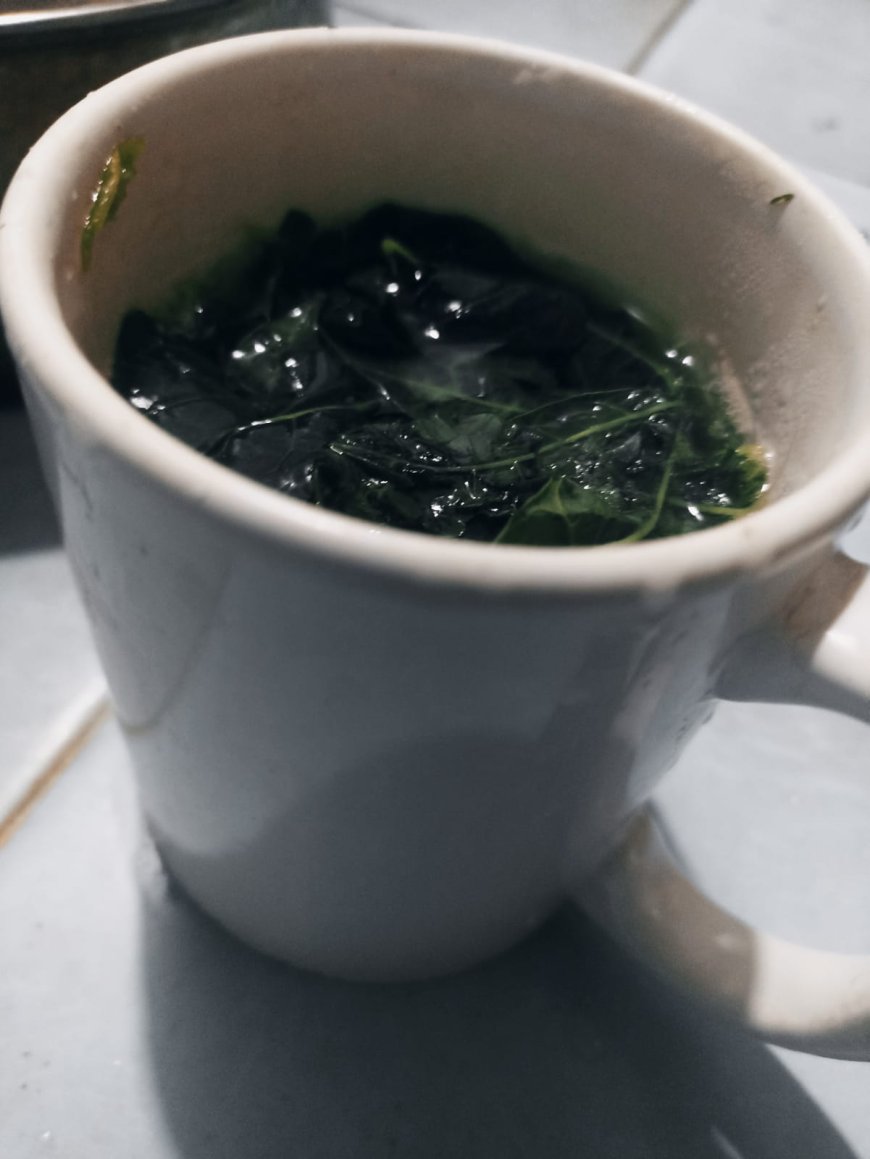
Many people believe that papaya leaves have medicinal properties and can be used as traditional medicine for various diseases, including fever. Some people believe that papaya leaves have fever-relieving properties because they contain compounds such as papain, chymopapain, and carpain that can have anti-inflammatory and antipyretic (fever-reducing) effects.
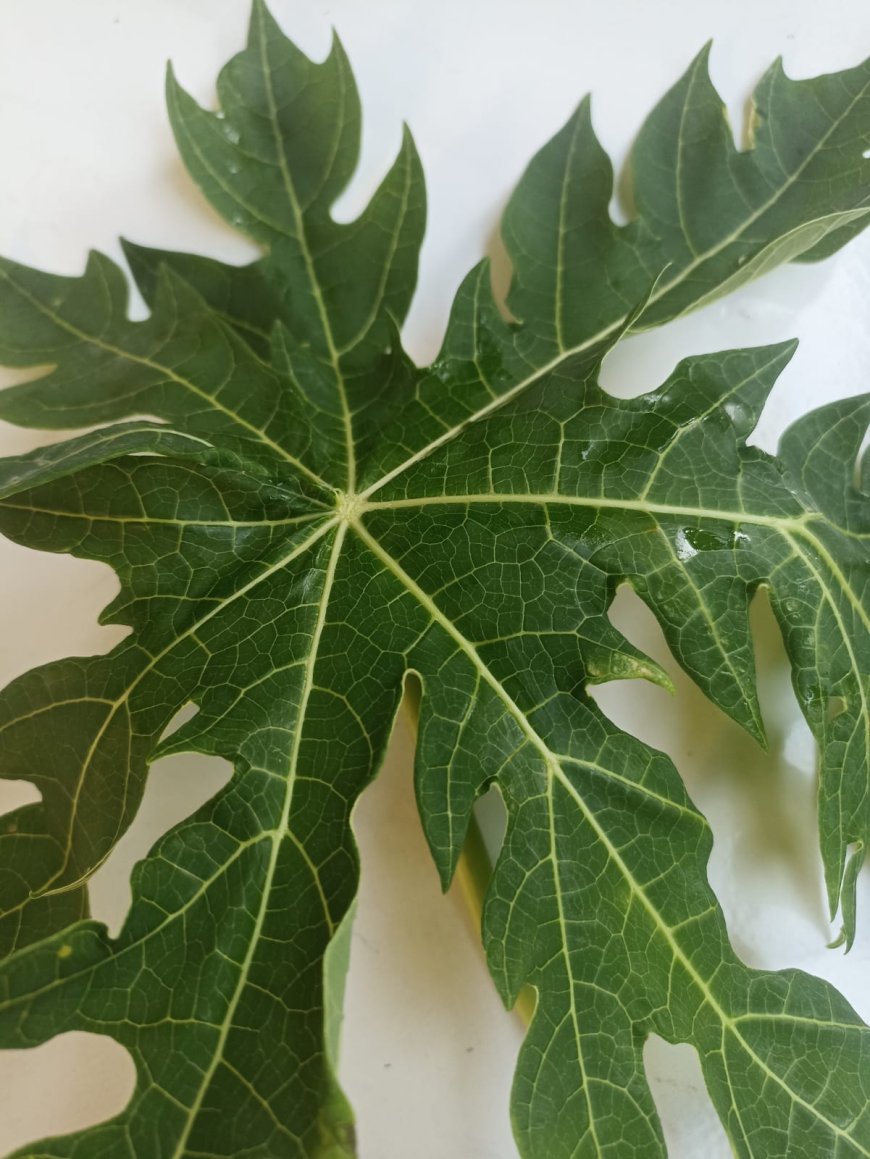
Herbal Medicine Papaya Leaf Loloh (Source Photo: Personal Collection)
Usadha Taru Pramana is one of the treatment methods in usadha practice that relies on plants as the basic ingredients in the preparation of medicinal herbs. The plants chosen in the context of Usadha Taru Pramana have characteristic properties that can be classified as tis (cold), anget (hot), or dumelada (medium). In the Ayurvedic tradition, there are six tastes that can be recognized by the human tongue, namely Madhura (sweet taste), Amla (sour taste), Lavana (salty taste), Tikta (bitter taste), Katu (spicy taste), and Kashaya (tart taste). These six flavors are known as Sad Rasa, and the use of plants in Usadha Taru Pramana focuses on the combination of flavors in plants to achieve balance of the Tri Dosha elements.
The basic concept in Ayurveda is known as Tri Dosha, which refers to the three main elements in the human body: Vata (air and space element), Pitta (fire and water element), and Kapha (water and earth element). A proper balance between these three elements is essential in maintaining a healthy human body. Tri Dosha imbalances, such as an increase in the Pitta element resulting in an increase in body temperature and a decrease in the Kapha element resulting in a lack of body fluids, can cause various health problems, including dengue fever. Therefore, maintaining the balance of the Tri Dosha elements is a key factor in maintaining the health of the human body.
In the Balinese Usadha Taru Pramana tradition, papaya leaves are considered to be a fever-relieving medicine. Papaya leaves, which are classified as vanaspatya plants with a bitter taste, are known to have tis (cold) properties. The concept of tis is one of the three characteristics in the Usadha Taru Pramana tradition, where plants can be tis (cold), anget (hot), or dumelada (medium). Since papaya leaves are tis, they are often used in cases of dengue fever to help lower body temperature.
However, the benefits of papaya leaves are not just limited to its tis properties. Papaya leaves also contain a wide array of compounds that have health potential. These include alkaloids, flavonoids, saponins, tannins, and glycosides that have been linked to anti-inflammatory capabilities. In addition, the presence of proteinolytic enzymes such as papain and chymopapain in papaya leaves plays a role in increasing platelet count, which is crucial in treating dengue fever. The alkaloid fraction known as carpaine was shown to be responsible for the anti-thrombocytopenic effect, and the flavonol and flavonoid components in papaya leaves have a role in stimulating blood cell production.
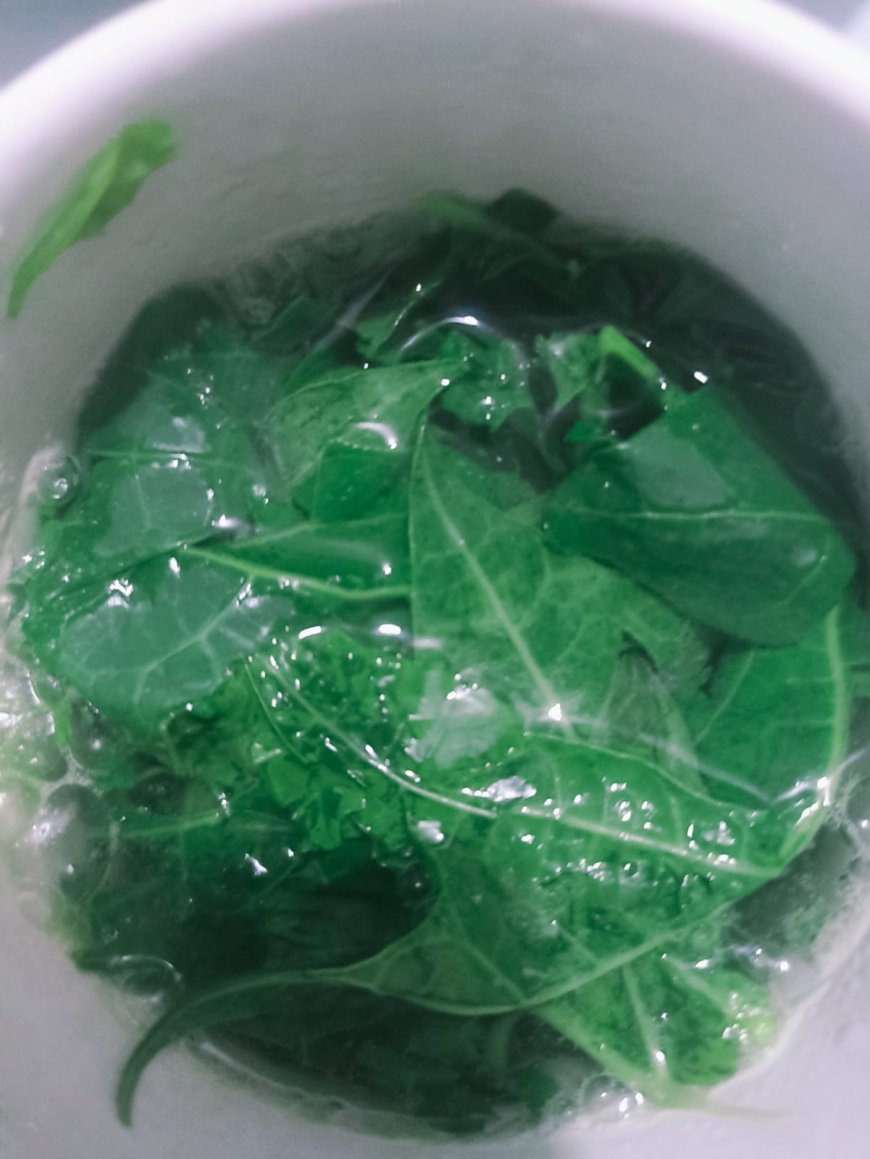
Herbal Medicine Papaya Leaf Loloh (Source Photo: Personal Collection)
Papaya leaf Loloh has been part of the Usadha Taru Pramana practice used to relieve fever, especially in the context of dengue fever in Denpasar City. The local community follows traditional procedures in preparing this herb in liquid dosage form, either in loloh or decoction form, the dosage of which is adjusted according to the patient's condition when platelets are decreased. Here is a guide to processing papaya leaves into a fever-relieving drink:
1. Start by using fresh papaya leaves and make sure to clean them with clean water.
2. Cut the papaya leaves into pieces and mash them or use a blender.
3. Next, squeeze the mashed papaya leaves to collect the water.
4. Mix the papaya leaf juice with the appropriate amount of boiled water.
5. If desired, add sugar or honey to give the drink a sweet taste or salt to remove some of the bitterness of the papaya leaves.
6. Stir the mixture well, and drink the papaya leaf loloh regularly according to the given guidelines to help relieve fever.
By following these steps, people can maintain the tradition of using papaya leaves as a natural method to treat fever and support recovery efforts from dengue fever.
